
Become a member
Join today and help protect nature, beauty and history – for everyone, for ever. Enjoy access to more than 500 places with National Trust membership.
One day is never enough. Discover a complete Norfolk estate with something for everyone.
Blickling Estate, Aylsham, Norfolk, NR11 6NF

| Asset | Opening time |
|---|---|
| House | 11:00 - 15:00 |
| Garden | 10:00 - 16:00 |
| Park | Dawn - Dusk |
| Stables Café | 10:00 - 16:00 |
| Muddy Boots Café | 10:00 - 16:00 |
| Shop | 10:00 - 16:00 |
| Second-hand Bookshop | 11:00 - 15:00 |
| Woodgate, Bucks Common & Fisherman's car parks | Dawn - Dusk |
House and gardens last entry is 30 minutes before closure. Last orders in cafés 30 minutes before closure. The RAF Oulton Museum is closed for the winter but will be open Saturdays and Sundays 11am – 3pm between 29 November and 21 December. The Stamp Shop open on Tuesdays, Thursdays, and Sundays, 11am - 3pm. Cycle Hire is now closed until February half term 2026.
| Ticket type | With Gift Aid | Without Gift Aid |
|---|---|---|
| Adult (18+) | £18.70 | £17.00 |
| Child (5-17) under 5s free | £9.40 | £8.50 |
| Family (2 Adults and up to 3 children) | £46.80 | £42.50 |
| (1 adult and up to 3 children) | £28.10 | £25.50 |
| Group (Adult 18+) | £16.15 | |
| Group (Child 5-17) | £8.08 |
The largest second-hand bookshop the National Trust has to offer, open seven days a week. Currently accepting donations, however please call in advance on 01263 738075 if you're planning to donate a large amount of books.
The Stables and Muddy Boots cafés are open with indoor and outdoor seating.
We have four car parks across the Blickling Estate operating on a pay and display basis with a charge of £5 (coin only) for non-members. To pay by card, please pop into our Estate Barn visitors reception. Members please scan your card to obtain a free ticket.
Cycle parking is located in the main car park and inside the farmyard.
Dogs under close control are welcome on most of the parkland walks. Please keep them on a lead in car parks and on the lake walk as these are the busiest areas. Dogs on short leads are welcome in the farmyard, the bookshop, on the front drive, in the estate barn and Muddy Boots café. Only Assistance dogs are allowed in the house, garden and east wing.
Baby changing can be found at Estate Barn in the main car park, near East Wing visitor reception and in the Farmyard area. Bottles and baby food can be warmed up in our cafés. We welcome breastfeeding everywhere at Blickling. High chairs are available in the Stables café.
Picnic benches can be found in the Garden under and around the stretch tent, in the Farmyard and near the Estate Barn visitor welcome near the main car park. You're welcome to bring a picnic blanket and find a spot to eat surrounded by nature.
A selection of seasonal plants can be seen on the main drive and are available to purchase from the shop.
The Bucks Arms is a seventeenth century traditional pub and former coaching inn on the walk down from the main car park to the house (not National Trust).
Shop with seasonal peat-free potted plants, gifts, homeware, books and gardening accessories.
Toilets, including accessible toilets in main car park, East Wing and in the Farmyard. A Changing Places toilet is located in the Farmyard.
Blue Badge parking in the main car park, around 385 metres from the House and Garden entrance. Some accessible parking and drop-off available in the Farmyard – accessed via the main road, turning at the Church. Accessible toilets. Changing Places. Wheelchairs and mobility scooters available. Multi-use trail through the parkland.
Our multi-use trail provides access for all, with cyclists, walkers, runners, pushchair and adapted wheelchair users, and for powered mobility vehicles to enjoy, all year round.
Accessible toilets in main car park, East Wing and in the Farmyard. A Changing Places toilet is located in the Farmyard.
A braille Welcome Leaflet is available from the Estate Barn Visitor Reception, and a braille guide is available in the House.
Located in the Farmyard. Access is by radar key (one is available from the Shop in the East Wing).
Accessible car parking available around 385 metres from the Hall and Garden entrance. There are some accessible parking spaces in the Farmyard – accessed via the main road, turning at the Church.
A drop-off point is available at the Farmyard accessed via the main road, turning at the Church. There is seating available.
Fixed induction loops are available at all till points.
Large print guides are available at visitor welcome points and in the House.
There are ramps to both cafés onsite. For the Muddy Boots café, please head to the rear entrance for access, located next to the car park. You’ll find the main entrance to the Stables in the East Wing, with ramped access.
There are ramps throughout the East Wing to provide access through the Shop and to other facilities. Some ramps are steep.
The multi-use trail provides some level access. From the main car park or Farmyard parking there are some slopes to access the main facilities, as well as gravel on the main drive to the House and in the Gardens.
Limited lift access in the House for those able to evacuate via the stairs without assistance in the event of an emergency.
Some of the walkway through the East Wing can feel narrow, and there are some narrow corridors in the House.
Mobility scooters are available to hire from the Estate Barn visitor reception next to the car park (parkland scooter) and the East Wing visitor reception near the Farmyard (garden scooter). Booking is recommended at peak times. Please call 01263733956 or email: blickling@nationaltrust.org.uk to book (please note, emails are only monitored Mon-Fri 9am-5pm).
Ramped access into the East Wing, House, Gardens and West Wing exit from the House.
Some seating is available on all main pathways, key locations are highlighted on the visitor map. There are seats in most rooms of the House and a mix of soft seating with arms and backs are provided.
In the Garden there are steps up to the Temple. Access to the RAF museum is on the upper floor of the East Wing by stairs.
Manual wheelchairs are available from the East Wing Visitor Reception. Two Mountain Trike Push all terrain wheelchairs are available from the Estate Barn Visitor Reception. If you would like to book this equipment, please call 01263738030 or email: blickling@nationaltrust.org.uk prior to your visit.
Step into Christmas at Blickling Estate. See inside the decorated House at one of Norfolk's most special places.
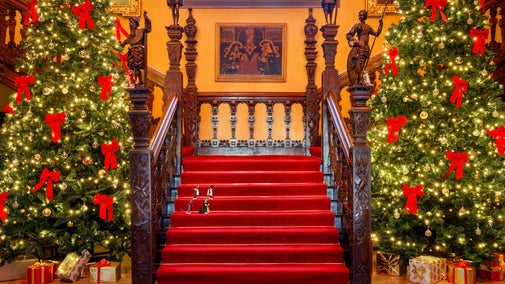
Keep your little explorers busy on a family day out at Blickling with activities across the estate. Enjoy everything from spotting trails in the House to hide and seek in the gardens or cycling adventures and den building in the woods.

Take a look at the events we have coming up over the next few months.
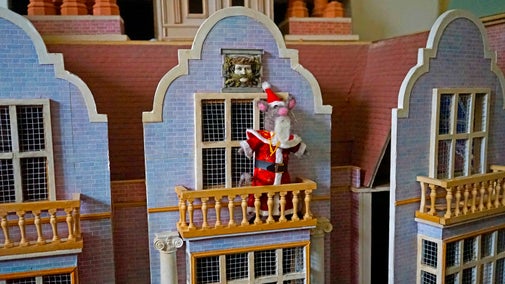
Offering delicious, locally sourced and produced food, stop at one of the cafés, browse in the shop or grab a bargain in the second-hand bookshop.
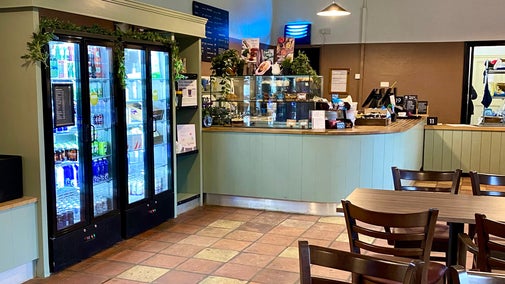
Blickling is a three pawprint rated place. The parkland is the perfect place to take your dog for a walk. Read our guide on how to make the most of your visit together.

We believe that Blickling Estate should be open and accessible for all, and we are taking steps to ensure that as many people as possible can experience Blickling's history and nature. Here you’ll find information about how to make the most of your visit.
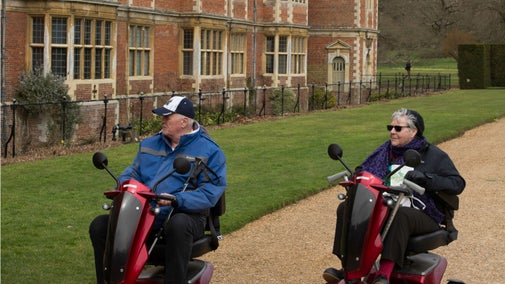
Plan a group visit to Blickling Estate and enjoy a garden for all seasons, a collection of treasures and great places to savour the perfect lunch or afternoon treat.
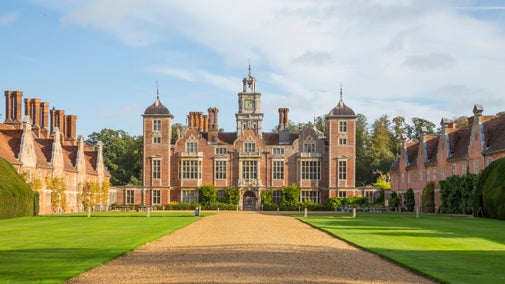
Jacobean mansion with Long Gallery, featuring a nationally important collection of books.
55 acres of formal garden, the result of three centuries of planting, with ancient yews, parterre, lake and productive walled kitchen garden.
Over 4,600 acres of woodland, parkland and farmland, which sit at the heart of Norfolk's beautiful Bure meadows.
The Stables and Muddy Boots cafés offer hot and cold drinks, light meals, snacks and cakes, with indoor and outdoor seating.
Shop with gifts, homeware, books, gardening accessories and seasonal peat-free potted plants. Second-hand bookshop stocked with thousands of pre-loved books. Stamp shop with a wide range of global stamps for the avid philatelist and new collectors.
Royal Air Force Oulton on the Blickling Estate undertook vital work during the second world war. Explore the museum and see the collection of objects and documents donated by families whose relatives served here.
The cycle hire hub at the Old School has a variety of bikes for all ages, including electric bikes, trailers and balance bikes so the whole family can explore the woods and parkland in the wider estate. Open February to October.
Stay in one of seven characterful holiday cottages. Packed with charm and atmosphere, and sleeping up to eight, options include a traditional thatched cottage and the iconic tower with stunning views over the parkland.
Step into Christmas at Blickling Estate. See inside the decorated House at one of Norfolk's most special places.

Take a look at the events we have coming up over the next few weeks and months.

Keep your little explorers busy on a family day out at Blickling with activities across the estate. Enjoy everything from spotting trails in the House to hide and seek in the gardens or cycling adventures and den building in the woods.

Discover more about Blickling Hall, in Norfolk, a Jacobean mansion thought to be the birthplace of Anne Boleyn, and sits in a historic park.
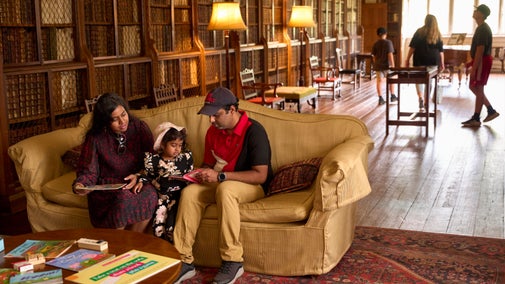
If you'd like to lose yourself in a garden full of character and historic features, Blickling Estate has something for every visitor.

There's much more to Blickling Estate than its famous house. Covering 4,600 acres with 950 acres of woodland and parkland and 3,500 acres of farmland, Blickling Estate is great for exploring alone, with family or your four-legged friends.
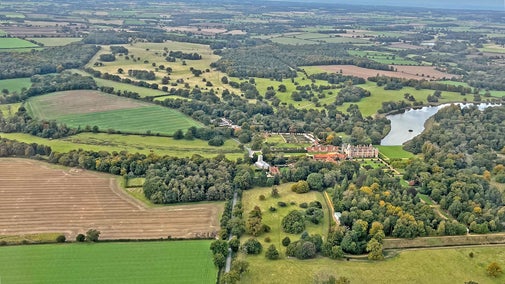
During the Second World War, Blickling became billets for RAF Oulton aircrew. The museum remembers those who served as part of Bomber Command squadrons and risked their lives.

With bikes for all ages to hire, including electric, children's trailers and balance bikes, the whole family can enjoy exploring Blickling’s parkland on two wheels.

Take a look at our fishing guide with information on purchasing tickets and how to make the most of your visit.
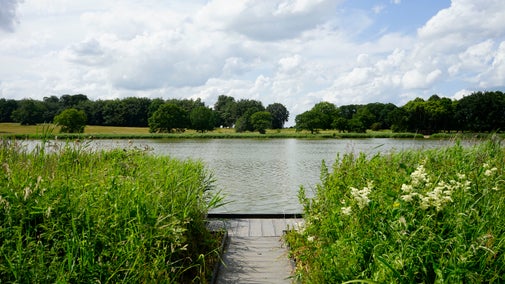
Tour the Blickling Estate by bike, wheelchair, with a pushchair or on foot, via this all-weather hard-surface footpath, with historic buildings and woodland along the way.

With gentle slopes, woods, open fields, frequent seats and breathtaking views, this is a walk for the 'not so energetic'. Easy, 2 miles.

Take a walk around Blickling Estate to see where men and women who served at nearby RAF Oulton during the Second World War were accommodated.

This historical scenic stroll through woods and open land at Blickling Park leads you to its striking Mausoleum. Look out for barn owls along the way.

Tackle this long circular walk around Blickling, taking in the villages of Calthorpe and Erpingham, the estate’s Great Wood and several historic buildings.

Explore the Blickling Estate's parkland on this family-friendly walk, visiting points of interest including the Tower, Brickyard and Mausoleum.

Enjoy sweeping views of the Jacobean mansion at Blickling, surrounded by 4,600 acres of parkland, woods and fields, on this invigorating trail run.

Offering delicious, locally sourced and produced food, stop at one of the cafés, browse in the shop or grab a bargain in the second-hand bookshop.
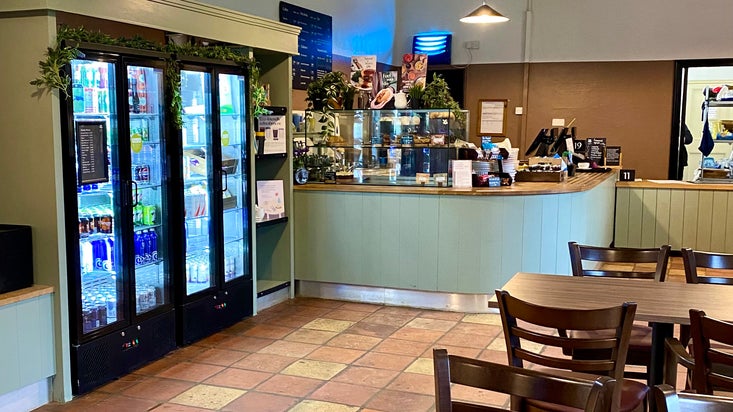

Take the spiral staircase to the roof terrace of this quirky race stand for expansive views across the Blickling Estate.
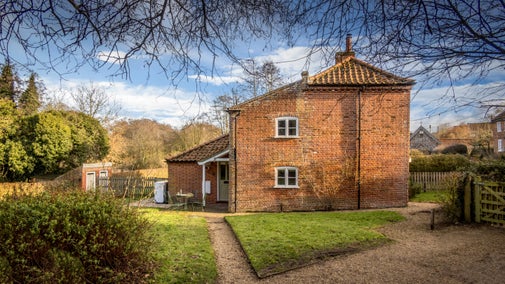
A homely cottage with its own stretch of riverbank, set on the Blickling estate.

A barn conversion in the Norfolk countryside with an enclosed garden on the outskirts of the Blickling Estate.

A Blickling estate cottage with an inviting interior and miles of walking trails on the doorstep.

A traditional thatched cottage set on the Blickling estate, just minutes from lakeside walks.

On the Blickling Estate, this converted dairy has miles of walking and cycling trails nearby.

Surrounded by countryside with its own private stretch of river bank, and a traditional interior.
Wander through beautifully decorated rooms filled with traditional Christmas sparkle, and enjoy a cosy, family-friendly atmosphere.
Get outdoors and join one of our social walks each seaoson, led by one of our walk leaders.
An open-air celebration of White Isle-inspired house music, reinvented by the 32-piece Urban Soul Orchestra, headline DJs and live vocalists.
Nobody ever forgets their first sight of Blickling. The breath-taking Jacobean mansion and ancient yew hedges sit at the heart of a magnificent garden and historic park in the beautiful Bure meadows.
Surrounding the house, the formal garden is the result of three centuries of inspired planting, and the gently undulating historic parkland is great for exploring on foot or by bike. Grab a map of our way-marked walks from visitor reception and enjoy discovering intriguing landmarks, stunning views and wildlife.
Please note: With over 4,600 acres to explore, Blickling's parkland is the perfect place to take your four-legged friend for a walk. However dogs, except assistance dogs, are not permitted in the house, East Wing or formal garden.
Mentioned in the Domesday Book, the estate was the birthplace of Anne Boleyn, and during the Second World War RAF air crew were billeted here.
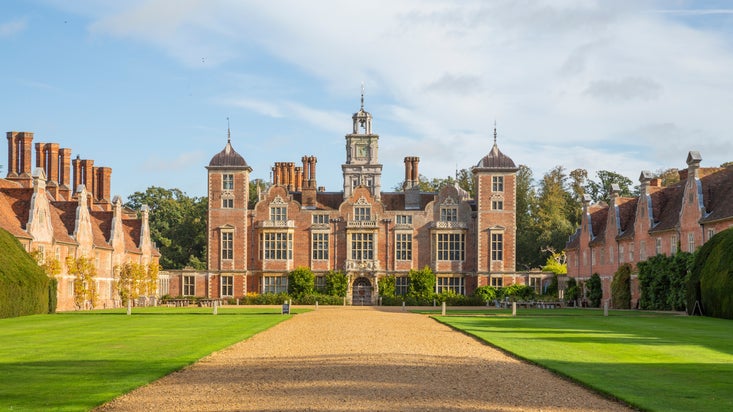
In January 2026, the car park payment machines will be replaced at Blickling Estate, with the option to scan membership cards and pay via an app.

A walnut tree sapling from Roger Deakin’s Suffolk home, Walnut Tree Farm, has been planted at John’s Water on the Blickling Estate, which features in Deakin’s book ‘Waterlog – A Swimmers Journey Through Britain’’ in the chapter entitled ‘The mill-race’. The walnut tree was a gift from Patrick Barkham, author of Deakin’s biography ‘The Swimmer – The Wild Life of Roger Deakin’.
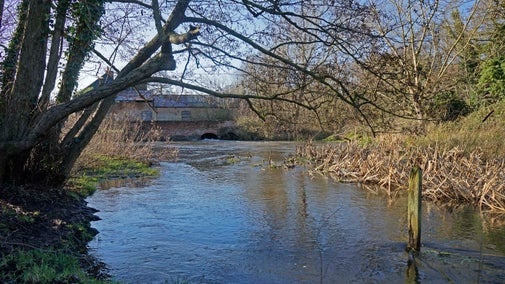
As part of the International National Trust Organisation’s Withstanding Change project, Blickling Estate has been twinned with the Egyptian Heritage Rescue Foundation (EHRF) in Cairo. Since spring 2023, we’ve been working closely with the EHRF and learning together about climate adaptation – how to protect our sites from the impacts of climate change, safeguarding them for future generations.
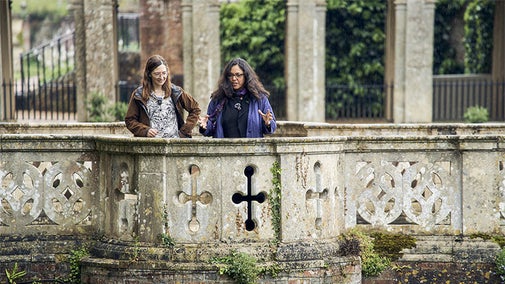
National Trust staff and volunteers, community groups and children from a local primary school have helped plant over 13,000 trees at Blickling, creating vital wildlife corridors and habitats along the River Bure.

Behind the scenes, the team at Blickling clean, protect and conserve the hall and collections items.

Discover the work our ranger team are involved with to conserve and protect the 4,600 acres of woodland, parkland and farmland on Blickling Estate for future generations.

Discover more about getting involved and becoming one of the more than 500 volunteers who help in various roles as part of the team at Blickling Estate.


Join today and help protect nature, beauty and history – for everyone, for ever. Enjoy access to more than 500 places with National Trust membership.
By sharing your email address you’re agreeing to receive marketing emails from the National Trust and confirm you’re 18 years old or over. Please see our for more information on how we look after your personal data.